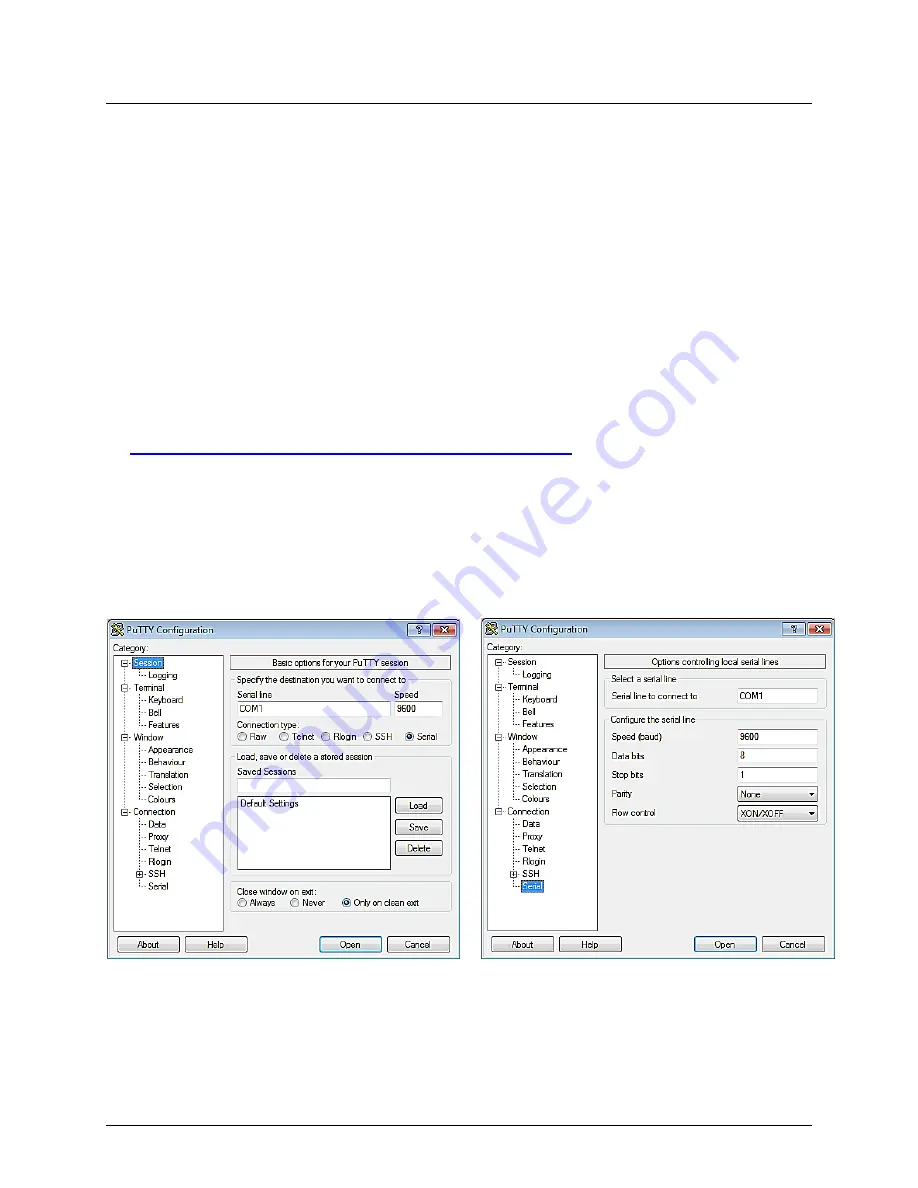
Benchmark 2.0 LN Installation, Operation & Maintenance Manual
CHAPTER 9 – RS232 COMMUNICATION
OMM-0046_0J
AERCO International, Inc.
•
100 Oritani Dr.
•
Blauvelt, NY 10913
Page
107
of
168
GF-123
Ph.: 800-526-0288
06/18/2015
CHAPTER 9. RS232 COMMUNICATION
9.1 INTRODUCTION
The RS232 communication feature permits viewing or changing of Control Panel menu options
and also provides access to data logs showing Event Time Line, Fault and Sensor log displays.
The RS232 port on the front panel of the C-More Control Box (Figure 3-1) can be interfaced to a
laptop computer or other suitable terminal using a RS232 adapter cable. RS232 communication
can be accomplished using any “Dumb Terminal” emulation, such as “PuTTY” which is not
included with Microsoft Windows, but can be downloaded for free on the internet. Source and
instructions for using Putty are provided here:
9.1.1 Aquiring the PuTTY Application
Download the
putty.exe
program to your desktop from:
www.chiark.greenend.org.uk/~sgtatham/putty/download.html
You can use PuTTY to logon to remote computers as well as run a single command on a
remote server. PuTTY does not need to be installed, so just clicking the downloaded executable
will start it.
9.1.2 Logging on to a Remote Machine Using PuTTY
To use
PuTTY
to logon to a remote machine, bring up the PuTTY application by double-clicking
its icon. You will see the main window as shown in left image of Figure 9-1.
Figure 9-1: PuTTY GUI: Basic Serial Session (L) and Serial Options (R)
In Serial mode, text typed into the PuTTY window will be sent straight out of your computer's
serial port, and data received through that port will be displayed in the PuTTY window.
To create a Serial connection, click the radio button labeled
Serial
. The
Serial line
and
Speed
fields will then be automatically filled in as shown in
left
image of Figure 9-1, but will allow you
to specify the serial line to use (if your computer has more than one) and what speed (baud
















































